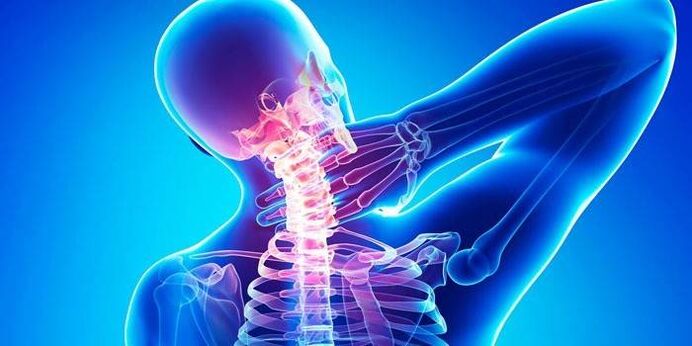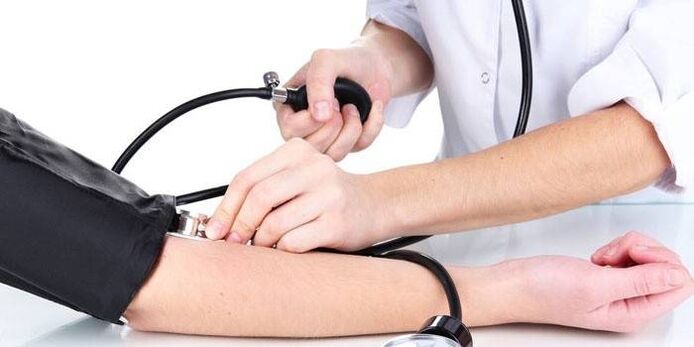Another name for the disease is the degenerative destructive lesions of the spine that affect the body of the vertebrae, ligaments and arthroscopes, intervertebral discs.Often, it is often seen in both men and women after 30 years of diagnosis.According to statistics, from 50% to 80% of the population suffer from this disease.

Classification of symptoms of cervical osteochondrosis
The development of this disease sometimes occurs earlier than 30-35 years, so signs of this disease may occur even during puberty.The signs of cervical osteochondrosis are discussed in detail below, a disease that has become a real problem in the modern world.Seated work and long-term staying in front of a computer have a negative impact on a person's health.All symptoms of cervical osteochondrosis are associated with failures in various systems operations:
- In late-stage conditions, there are signs of compression and the integrity of the spinal cord is violated.
- Pathological processes can affect the peripheral nervous system.The spinal cord root located next to the focal point of the deformation of the bone and cortical tissue is exposed to negative effects.
- In some cases, the vertebral artery is pinched.These blood vessels deliver nutrients, oxygen, to brain cells.Violation of these processes can lead to a sharp deterioration of the human well.
pain

As we all know, one of the first signs of disease development is pain in the cervical area.First, it passes quickly, is periodic, but then becomes a chronic form.The main places for pain positioning are:
- occipital muscles (enhanced when the neck is tilted);
- shoulder area;
- neck.
Depending on the location of the lesion, it may vary, and the unpleasant sensation may be acute, firing, periodic reduction, touch and constant.Over time, the head is difficult to move, which is related to the tension of the neck muscles.If the artery is pinched, cervical migraines are sometimes observed (as blood supply weakens, the lack of oxygen appears to be a headache).
nausea
In some cases, blood vessels in the circulatory system are squeezed, ensuring that oxygen flows to the human brain, the inner ear.Therefore, nausea of osteochondrosis occurs.Often, this symptoms are accompanied by loss of appetite, which can lead to weight loss and a deficiency of essential nutrients.In the later stages, the disease can cause vomiting when turning the head, walking, or tilting.This is due to the lack of blood flow to the middle ear, where the balance center is located.
Neurological symptoms of cervical osteochondrosis

Some manifestations of the disease cannot be immediately attributed to the characteristics.You should know what symptoms of cervical osteochondrosis should not be ignored, such as lack of air.As the department is damaged, a syndrome of diaphragmagmatic nerve stimulation develops.The patient has difficulty breathing and lacks oxygen, which can cause shortness of breath and even severe suffocation.
This pathology is usually accompanied by stuttering, which is enhanced if we are in a uncomfortable position in our sleep.This leads to the fact that a person who does not rest at night can wake up with general discomfort, weakness, fatigue and breaking.In the absence of treatment, this condition can lead to memory deterioration, reduced brain tissue concentration and irreversible changes.
Vestibule sign
Another direction is how osteochondrosis manifests in the cervical vertebrae area - the vestibular symbol.The brain supply of all necessary nutrients occurs with the vertebral artery.If cervical osteochondrosis occurs and the work of the inner ear is disturbed, the patient's ears and sounds.In some cases, these symptoms can add violations or reduce hearing.
Throat lump
In some cases, the disease manifests itself in only one symptom - it is difficult to swallow.It seems that lumps form in the throat, osteochondral cervical vertebrae, which is difficult to sore, itching, dryness and swallow.These manifestations are associated with violations of the conduction of the neurovascular trunk from the spinal cord.A lump in the throat is not a specific symptom of osteochondrosis, it may indicate a tumor or inflammatory process.You should definitely consult a doctor when this sign appears.
Visual signs of osteochondrosis in the cervical area
Symptoms of cervical osteochondrosis may vary, but visual impairment is impaired.The supply of vision analyzers occurs through carotid arteries and vertebrates.If blood circulation is reduced due to the compression of the latter, vision begins to decline and does not improve when wearing the point.Cervical osteochondrosis - Symptoms:

- reduced pressure;
- "Floating", a flashing point;
- atherosclerosis of the middle cerebral artery;
- Violation of the act of focusing on this subject;
- The veil is foggy before my eyes.
One characteristic of reduced vision is vertebrae entrainment, and circulatory disorders will be the lack of improvement when wearing glasses, and special exercise.Only timely treatment of underlying disease (before irreversible tissue lesions) can help change the condition.
Arterial signs
The spine plays an important role in the human body, so any disease affects many systems.Cervical osteochondrosis has certain arterial signs, which suggests this disease.These include sudden loss of consciousness.This is the most unpleasant and dangerous symptom inherent to the disease.This occurs due to a circulatory disease, when blood temporarily stops flowing through the cerebral arteries.
Due to the bone process' response to the stimulation of the nerve ends, obvious arterial spasm occurred.If your acquaintance suffers from osteocartilage in the cervical area and he has lost consciousness, it must be placed, lifting his legs on a hill to increase blood flow from the limbs and increase intake of the brain.After that, usually, people quickly arouse their senses.
Blood pressure instability is another symptom of this group of diseases.If it interferes with blood supply, the doctor can diagnose the suddenness of the indicator.This is not a specific symptom of osteochondrosis, but a general condition suitable for the disease.Blood pressure may decrease or increase.A man feels worse in this situation, so he needs to ensure peace.
Dizziness
It has been described before that sometimes there is this disease and sometimes it will cause loss of consciousness.This applies to situations where blood flows to the brain is very difficult.Often, patients feel dizzy when cervical bone and chondropathy.This is a common symptom for all patients with this disease.This phenomenon has the spontaneous properties of manifestation.The reason for this is to reduce the amount of oxygen in the inner ear.It is located in the human brain and is responsible for the sense of balance.Dizziness occurs in:
- Turn, neck;
- If you suddenly wake up.
The temperature of bone cartilage

In some cases, pathological processes spread between the structures of the cervical segment of the spinal cord.This happens when the channel is narrowed when the disk increases.The temperature of osteochondrosis is the body’s response to pathological data.Same reaction as vertebral artery syndrome.This is a common phenomenon in osteochondrosis in the final stages of disease development.Therefore, an increase in temperature refers to a nonspecific symptom of the disease.
This sign will not exist and the body's thermal regulation may be normal.If you feel constant pain on the back of your neck, neck, and worsen when you turn or tilt your head, you should contact your expert for a checkup.Lack of treatment will inevitably lead to the fact that the condition will worsen and a comfortable living standard will decrease.























